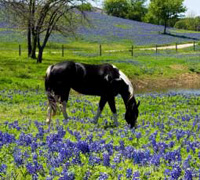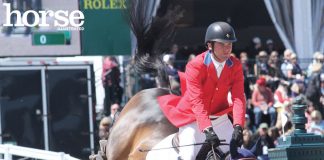 Most horse owners know that rich grass, especially the fresh grass that grows in the spring, can be dangerous in large quantities. Overconsumption of starches and fructan, a sugar present in many grasses, can lead to laminitis, leading many horse owners to restrict grazing in the spring and early summer.
Most horse owners know that rich grass, especially the fresh grass that grows in the spring, can be dangerous in large quantities. Overconsumption of starches and fructan, a sugar present in many grasses, can lead to laminitis, leading many horse owners to restrict grazing in the spring and early summer.
Two groups, each consisting of four pony mares, were used for the study over a six-week period. One group of ponies had full-time access to pasture. The other group was given three hours of pasture time daily and were stabled with free-choice access to water and haylage for the remainder of the day.
The researchers found that the ponies in the limited grazing group ate more during their three hours in pasture than the other group did during those same three hours, and the gap between the two groups increased over time. During the first week of the study, the ponies on limited grazing were consuming approximately 25% of their daily forage intake during their three hours of turnout time. By the final week of the study, they had increased their rate of grass consumption so that they were consuming 40% of their daily forage intake during their three hours in the pasture. This suggests that the ponies were not only able to increase their grass intake considerably, but that they may have learned that behavior as they began to anticipate the limited grazing routine.
Horse owners who are concerned that their horses may be consuming too much grass, even on limited turnout, have other options. Horses can be turned out on dry lots, or paddocks with little to no grazing. Horses kept on grass pasture can also be outfitted with a grazing muzzle during the spring and early summer to physically limit the amount of grass they can take in.
For more information:
Changes in proportions of dry matter intakes by ponies with access to pasture and haylage for 3 and 20 hours per day respectively for six weeks. J. Ince,A. Longland,C. J. Newbold,P. Harris. Journal of Equine Veterinary Science (2011)







In a way this study is obvious- the horse is trying to consume more grass if it has limited access vs having it readily available.
Wow! I never thought of it like this it is really cool how horse know just what to do!
It just shows how smart horses are! But, obviously it does still make a difference to limit their grazing time. I only let mine graze 2 hours a day.